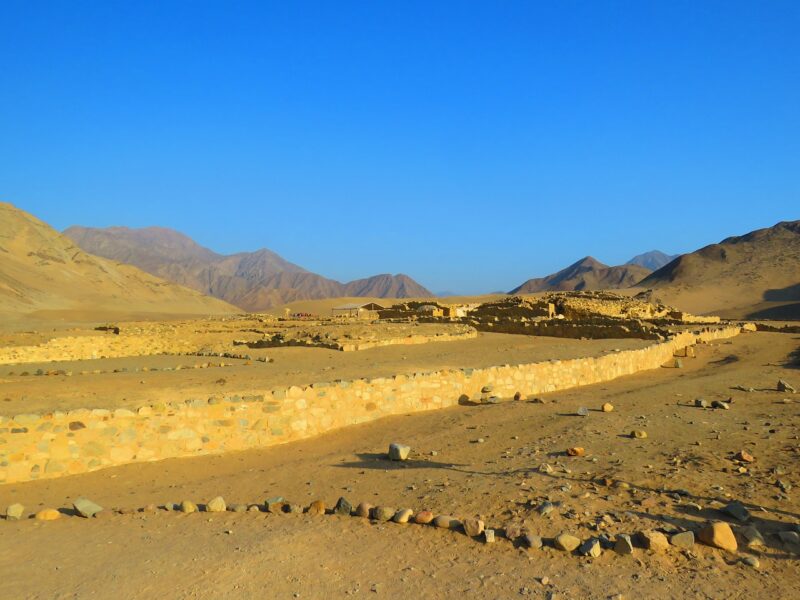Why Certain Ancient Civilizations Thrived in Deserts and Harsh Environments Against All Odds
November 17, 2024

The ability of certain ancient civilizations to stand resilient in the face of adversity, particularly in deserts and harsh environments, is a fascinating topic that prompts both admiration and inquiry. Why would societies choose to inhabit such inhospitable regions? What innovations allowed these civilizations to thrive despite their surroundings? This article delves into the intriguing interplay of ingenuity, resourcefulness, and environmental adaptation that enabled thriving communities to flourish in some of the planet’s most challenging habitats.
1. Introduction to Ancient Desert Civilizations
Throughout history, several ancient civilizations have made their homes in deserts and other arid regions. From the Egyptian civilization that developed along the banks of the Nile River, through the Nabateans who flourished in the Arabian Desert, to the indigenous peoples of the American Southwest, each adapted their lifestyles to thrive in environments that many would consider unlivable. Understanding the factors that contributed to their success offers valuable insights into human resilience and innovation.
2. Geographic Challenges and Opportunities
Deserts and arid lands present significant challenges for human habitation, including:
- Limited water supply
- Extreme temperature fluctuations
- Poor soil quality for agriculture
- Isolation from trade routes and other populations
However, these environments also possess unique opportunities that certain civilizations capitalized on:
- Solar energy potential for sustainable practices
- Rich mineral resources beneath the surface
- Strategic trade routes passing through deserts
The ability to identify and exploit these opportunities while overcoming geographic challenges was key to the success of ancient desert civilizations.
3. Water Management Innovations
The quest for water has driven many innovative solutions that allowed civilizations to thrive in arid regions:
- Irrigation Systems: Ancient Egyptians implemented sophisticated irrigation methods that diverted the Nile’s waters to sustain crops in the surrounding desert. The use of basins and canals not only increased agricultural output but also created a surplus that supported population growth.
- Qanats: The Persians developed qanat systems—underground channels designed to transport water from aquifers directly to populated areas. This clever system minimized water loss through evaporation and provided a reliable water source for agriculture and domestic use.
- Rainwater Harvesting: Civilizations like the Ancestral Puebloans in the American Southwest perfected rainwater harvesting techniques, capturing and storing infrequent rainfalls to sustain their communities.
These innovations reveal a remarkable capacity for adaptation and resilience in the face of limited natural resources.
4. Cultural and Social Structures
Successful ancient civilizations in harsh environments often developed intricate cultural and social structures to enhance community survival:
- Community Cohesion: Social bonds and a shared purpose underscored community cohesion. By working collectively to secure resources and protect their territory, societies strengthened their collaboration under adverse conditions.
- Redistribution of Resources: Some civilizations established systems of resource redistribution, ensuring that resources were shared among community members, which reinforced social ties while increasing survival rates.
- Trade Networks: Despite isolation, many desert civilizations developed extensive trade routes, allowing them to exchange goods with neighboring regions and acquire necessities that were scarce in their native environments. The flourishing of trade networks like the Silk Road stands as a testament to their ability to connect despite geographical barriers.
These social structures not only enhanced their resilience but also fostered cultural richness and adaptability to challenges.
5. Technological Advancements
As with water management, technological innovations enabled human settlement in harsh environments:
- Architecture: Desert dwellers exhibited astute architectural savvy, constructing homes adapted to the climate—utilizing thick walls for insulation and designing buildings to maximize airflow and regulate indoor temperatures.
- Agriculture Techniques: Techniques like crop rotation, soil amendments, and companion planting were adopted to enhance agricultural output in nutrient-poor soils common in arid areas.
- Transportation Innovations: In challenging desert terrains, advancements in transportation—like the camel caravan—facilitated trade and the movement of goods and people across vast distances.
Through a blend of technological ingenuity and resource management, desert dwellers overcame environmental challenges that seemingly hindered their survival.
6. Case Studies: Civilizations that Thrived Against All Odds
Examining specific civilizations provides valuable insights into the factors that enabled their survival in harsh conditions:
- The Puebloans (Anasazi): Residing in the arid Southwest of the United States, the Puebloans utilized sophisticated agricultural practices, including terraced farming, to effectively cultivate crops in challenging environments. They built a network of kivas (spiritual structures) and utilized available resources such as clay for pottery, enhancing their ability to thrive. They adapted their culture to leverage available resources and developed rich social structures.
- The Nabateans: This ancient civilization flourished in the Arabian Desert, creating the city of Petra, renowned for its impressive rock-cut architecture. The Nabateans mastered water conservation and management, employing cisterns and channels to collect and store rainwater, ensuring their survival in an exceedingly arid region. They facilitated trade across the desert, establishing Petra as a cultural and economic hub.
- The Maya Civilization: Although not a desert civilization per se, the Mayans constructed impressive urban centers in tropical dry forests while facing water scarcity. They developed intricate aqueduct systems and reservoirs to manage water resources effectively and cultivated crops using advanced agricultural techniques, affirming their adaptability to challenging climates.
These examples illustrate the remarkable resilience and adaptability of ancient civilizations, proving that even the most adverse environments can be overcome through innovation and collaboration.
7. Conclusion: Lessons from Ancient Civilizations
The extraordinary success of certain ancient civilizations in deserts and harsh environments serves as a source of inspiration for contemporary societies grappling with challenges such as climate change, resource scarcity, and social cohesion. Their innovations in water management, agricultural practices, social structure, and architectural design remind us of the strength inherent in human ingenuity and adaptability. By examining the past, we can appreciate the complexities of survival in extreme conditions and the lessons they provide for future resilience and sustainability.
The stories of these civilizations highlight the triumph of human spirit over adversity, a legacy that continues to resonate as we navigate our own challenges in a rapidly changing world.







